Earth’s core
The Crust has a thickness of about 10 to 40 km. It is mostly made up of light silicates with an average g = 3 g/cm3.
The upper and lower mantle is about 3000 km thick, and is made up of metallic silicates and sulfides with g = 3.5 to 6 g/cm3.
The liquid core is about 2100 km thick and is made up primarily of liquid Fe and Ni, with a g = 10 g/cm3.
The solid inner core has a diameter of 1300 km and a g = 13 g/cm3.
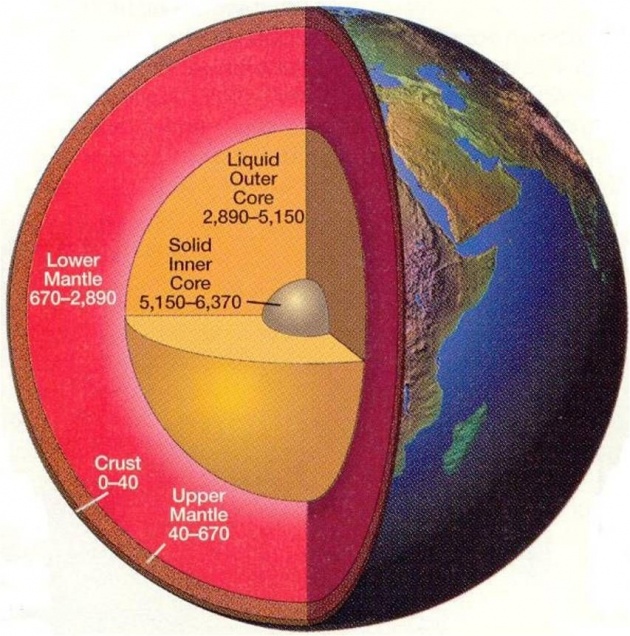
Convection currents
these are produced due to very hot material at the deepest part of the earth
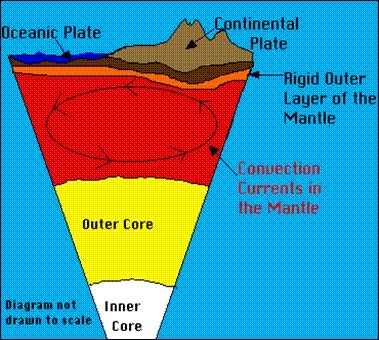
What are seismic waves?
seismic means vibrations so these are vibrating waves
there are two main types of seismic waves Rayleigh and love waves
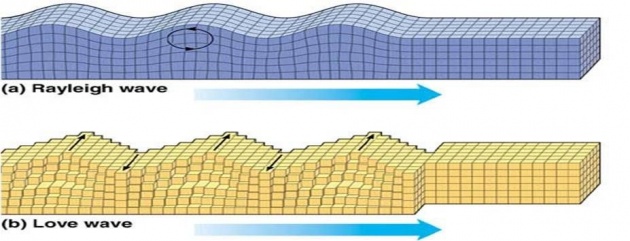
Two types:
Body waves: P and S
Surface waves: R and L
These are mechanical shock waves or vibrating waves travelling inside the earth
Either generated naturally e.g. by an earthquake, tectonic movement, magmatic movement, volcanic or geyser eruption, tsunami, rock-slide, glacier-movement, etc
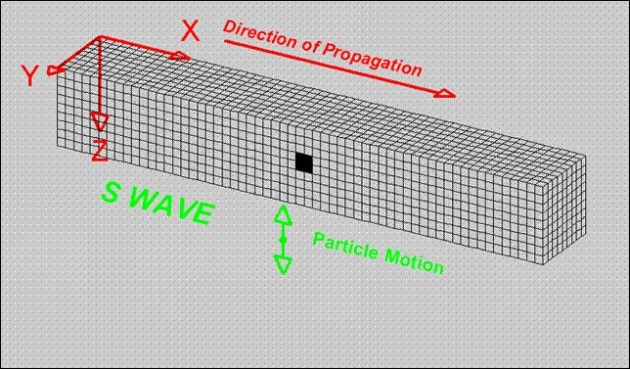
Body waves
P or primary waves
fastest waves
travel through solids, liquids, or gases
compressional wave, material movement is in the same direction as wave movement
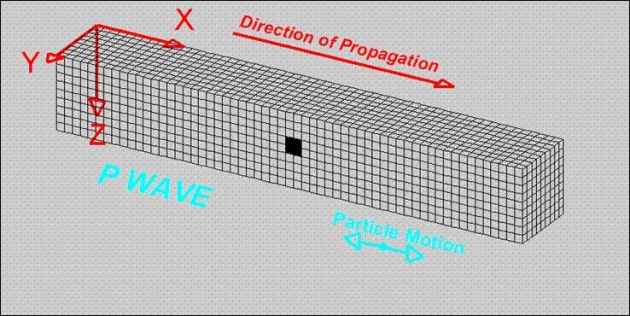
S or secondary waves
slower than P waves
travel through solids only
shear waves - move material perpendicular to wave movement
Seismic wave speed
The bulk modulus (K) of a substance essentially measures the substance's resistance to uniform compression.
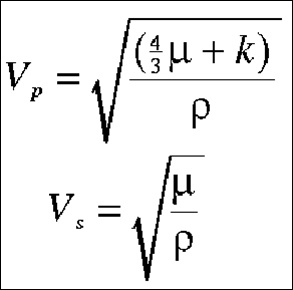
it is the ratio of stress to the strain.
shear modulus density
K = modulus of compressibility (bulk modulus
surface waves
waves which causes destruction to buildings.
Especially damaging to buildings
What are destructive effects of earthquakes?
Ground Shaking
amplitude, duration, and damage increases in poorly consolidated rocks
Earthquake hazards
Earthquake-induced landslides
Slope failures due to (i) inertial loading, (ii) strength loss in slope material
Liquefaction
Surface ruptures
This large slide temporarily blocked a river following the 1999 Chi-Chi earthquake in Taiwan. The river eventually formed a path around the slide and began to erode the slide materials. Note that the hillside was covered with vegetation before the slide, and hence the exposed bedrock marks the boundary of this large slide
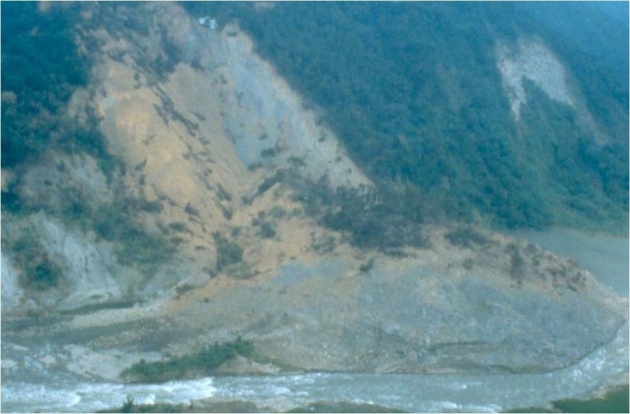
Liquefaction at Moss Landing
there was a earthquake atThe Loma Priet San Francisco Bay Area of California
Liquefaction-related damage occurred throughout the Moss Landing area, on Monterey Bay, during the 1989 Loma Prieta earthquake.
The photos in following slides illustrate a range of ground deformations and their effects on the infrastructure of this community.
A short portion of the access road to the State Park slumped with its supporting fill materials flowing outwards on both sides due to liquefaction. The collapsed portion is where the roadway crosses a former channel, which had been filled with loosely dumped sand.
The approach abutment to the 1-lane bridge was badly deformed and slumped due to liquefaction of the underlying fill and native sands.
Lateral spreading at the Marine Laboratory site caused the building foundation to spread apart by about 1 to 1.3 m. This wood frame building was almost torn apart, but thankfully did not collapse.
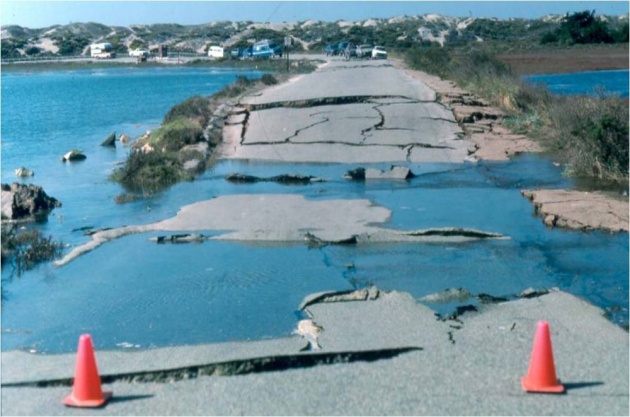
Liquefaction-induced failures
Earthquake
Liquefaction on Shallow Foundations
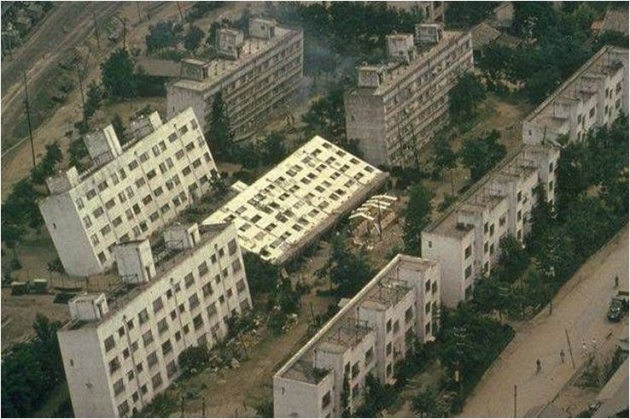
.Again, the bearing failure of its mat foundation was related to its relatively large height-to-width ratio.
About 2 m of right-lateral offset developed across this field as evidenced by offsets in fences.
A vertical offset of about 2 m developed just in front of these buildings. The buildings appeared relatively undamaged
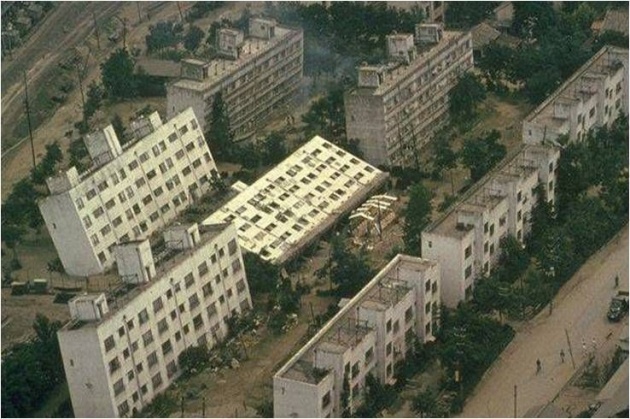
Surface rupture in Taiwan
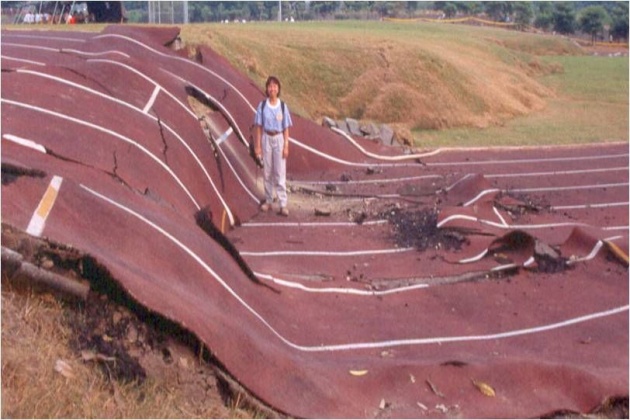
About 2 m of vertical offset developed where the thrust fault cut across this track field. Notice that the surface rupture is limited to a relatively narrow zone, with very little deformation of the ground surface on either side.
Earthquake engineering issues
Motion and inertial forces that occur during the shaking
Potential reduction of the shear strength of the soil
Effect on stability of the inertial forces, excess pore-water pressures and possible shear strength losses
Re-distribution of excess pore-water pressures and possible strain softening of the soil after the shaking has stopped
Permanent deformation
Sometimes may be tolerable
Sometimes very large and cause severe damage when there is extensive liquefaction
In many cases, the permanent deformation occurs after the shaking has stopped
Implication: inertial forces are not the direct cause of the permanent deformation
Post-earthquake deformation is caused by a redistribution of the excess pore-pressure and the potential associated loss of shear strength
Permanent deformation
Total loss of stability: Flow slides
Partial loss of stability: Deformations are significant but do not have complete collapse
Key question: Will structure be repairable after earthquake



